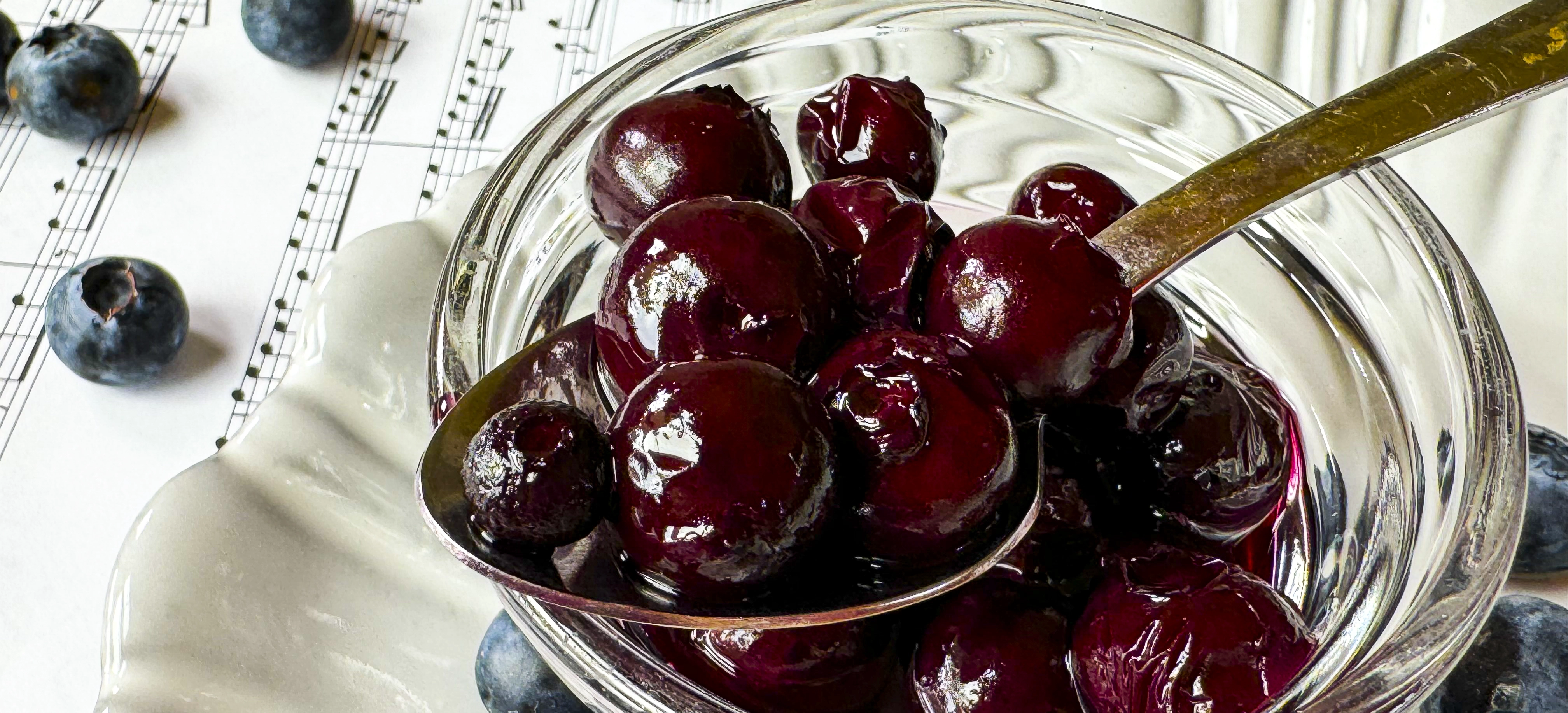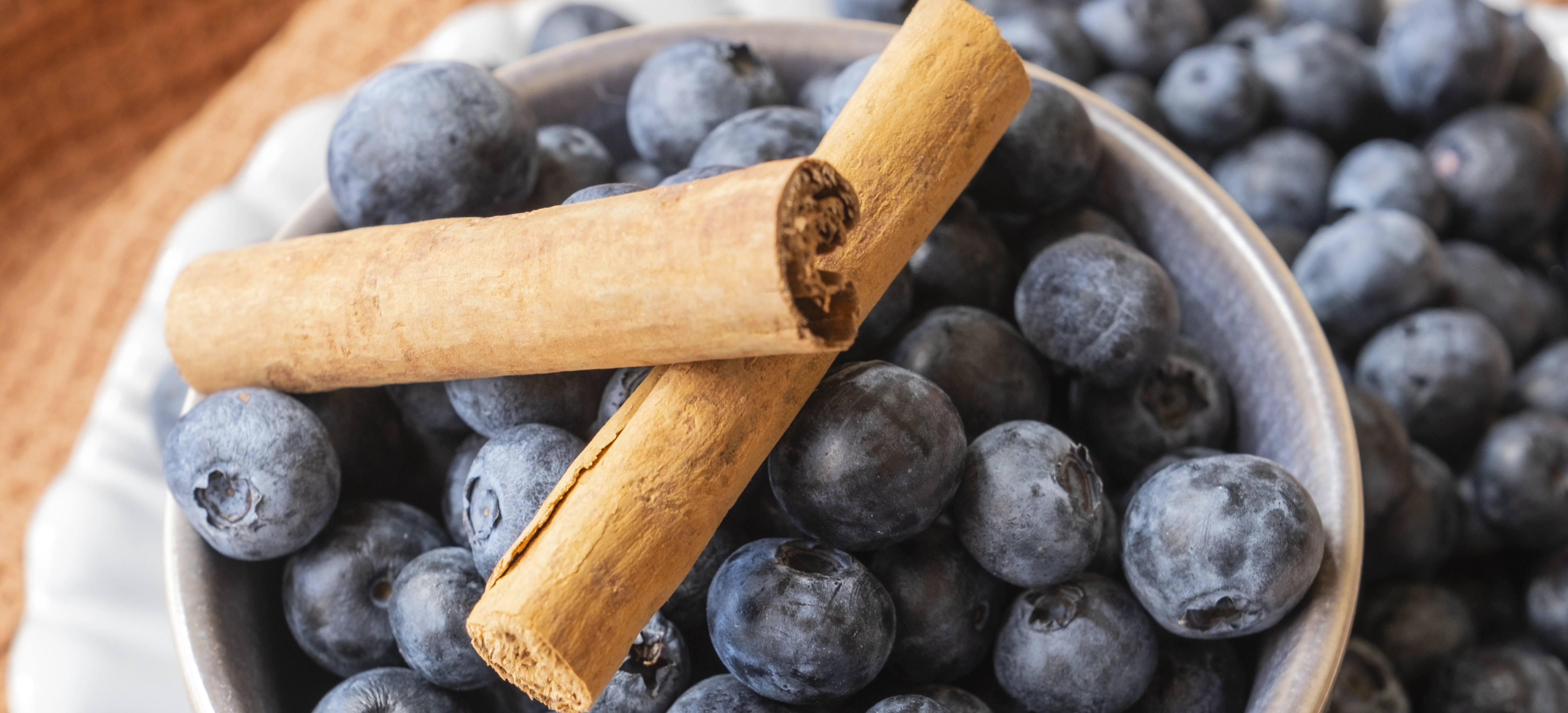Pickled Blueberries
- Pickles, Chutney, Relish & Sauces

The sweet-tart-fruity combination of pickled blueberries are a perfect partner with soft cheese, on antipasti platters, alongside BBQ meats or to jazz up that poke bowl salad. Blueberries have a fragile texture, so cook them gently and only for a few minutes. The hot pickling method is quick and easy. The berries are cooked in a sweet, spiced vinegar, then packed into warm jars and covered with the hot mixture. These pickled blueberries will be a great addition to the pantry – ready to spice up your next meal.
If there’s any spiced syrup left-over keep it for your next batch or use as a fruit shrub. What was old is new again and the fruit shrub is no exception. They are a healthy vinegar-based fruit cordial and a fabulous alternative to the more traditional sweet fruit cordials many of us are more familiar with.
- Preparation Time:
- 20 minutes
- Cooking Time:
- 20 minutes
- Quantity:
- 4 x 300 ml jars
PREPARATION
Sterilise sealable good quality glass jars with non-corrosive sealable lids.

INGREDIENTS
- 250 ml
- Apple cider vinegar
- 250 ml
- Red wine vinegar
- 175g
- Sugar
- 1/2 teaspoon
- Dried cloves, whole
- 1/2 teaspoon
- Dried Allspice berries, whole
- 2
- Cinnamon quills, small
- 500g
- Blueberries, fresh
METHOD
Select good quality blueberries by removing any damaged or over-ripe fruit. Gently wash and dry on a clean tea towel or paper towel to remove any excess moisture.
Combine sugar and vinegar into a preserving pan or heavy-bottom stainless-steel pan. Heat gently to dissolve the sugar. Add the allspice berries, cloves, and cinnamon quills. Simmer gently with the lid on for approximately 15 minutes to extract the flavours.
Add the blueberries and simmer gently for 5- 8 minutes until they are just cooked. They should remain whole.
Remove from the heat. Using a stainless-steel spoon transfer the whole blueberries to dry sterilised jars. Do not over fill the jars with fruit at this point.
Use a funnel to cover the berries with the spiced vinegar solution and fill to approximately 2.5cm (1 inch) from the top of the bottle and seal. The vinegar must completely cover the fruit. For longer term storage, vacuum seal using either the Food Preserving Unit or Stock Pot method listed in the Notes Section: Food Preserving Unit and Stock Pot Method below.
Label, and store in a cool dark place in the kitchen or pantry and use within 2 months. Allow the pickles to mature for at least 4 weeks before eating.
After opening store in the refrigerator.
NOTES
- Choose ripened clean berries. Do not use overripe and never use mouldy fruit as this will produce a poor-quality preserve.
- Good quality jars should be used in all preserving, particularly when they are processed in a hot water bath. Thin jars often cannot withstand the temperatures and may crack either in the bath or on and or after removal. Avoid the disappointment and invest in some good jars from a homewares or preserves outlet. Select jars that have non-reactive lids as the vinegar solution can cause the lids to rust over time.
- Remove the berries when they are just cooked, or slightly undercooked. They will continue to soften in the hot syrup until it cools and then again during the maturing process.
- Any leftover spiced syrup can be used as a delicious blueberry shrub. Just add some to a glass, top with ice and pour over still, mineral or soda water to make a refreshingly healthy drink. Traditionally made as a concentrated syrup it’s an alternative to sweet cordials. Fruit, sugar, vinegar, and spices are simmered to create interesting flavour combinations. Fruit shrubs are inexpensive to make and a perfect way to use up left over sweet, spiced vinegar from pickled fruits.
- The cooking time is an approximation only and should be used as a guideline. Cooking time will depend upon size and quality of the fruit and degree of heat the berries are cooked in. The aim is to have just-cooked slightly firm fruit that remains whole. The fruit will continue to soften as the pickles cools down in the jar.
- Types of sugar & Vinegar
- The type and colour of the sugar and vinegar used will affect the final colour and flavour of the chutney. Malt vinegar and brown sugar will produce very dark brownish preserve with a more earthy/molasses background flavour, while white wine vinegar or apple cider and white sugar will produce a preserve that has a fresher and brighter flavour. This is a matter of personal choice. In this recipe I have used a combination of red wine and apple cider vinegar to add some additional depth of flavour and colour without overpowering the blueberries.
- Take care to only use vinegar which has a 5% minimum acetic acid content. The acetic acid content acts as the principal preservative, and any lower quantity will compromise the safety of your preserves. Commercially available vinegar is 5%, however most homemade vinegars do not achieve this level.
- Food Preserving Unit Method
- Place sealed bottles/jars in Fowlers Preserving Unit.
- Cover with water, bring to the boil and hold at gentle boil for 30 minutes.
- Turn off, remove lid, and allow to stand for 5 minutes before removing.
- Using the tap on the preserving unit draw off some of the hot water. Reduce to a level that is sufficiently below the bottles to be able to safely remove them without scalding yourself.
- Remove from hot water bath and place on a board and rest overnight. A vacuum will form inside each jar and as it cools, it will draw down the lid and create a secure seal.
- Stock Pot Method
- Line a large stock pot with some sheets of newspaper or a cut-down cake rack. Place the bottles on the newspaper or rack, in the pot, allowing space between each bottle so they do not touch. This lining will protect the bottles from direct heat and help prevent cracking.
- Cover the preserves with water which is the same temperature as the preserves. Bring to the boil and hold at gentle boil for 30 minutes.
- Turn off, remove lid, and allow to stand for 5 minutes before removing.
- If possible, remove some of the hot water so the level is sufficiently below the bottles to be able to safely remove them without scalding yourself.
- Remove from hot water bath and place on a board and rest overnight. A vacuum will form inside each jar and as it cools, it will draw down the lid and create a secure seal.
